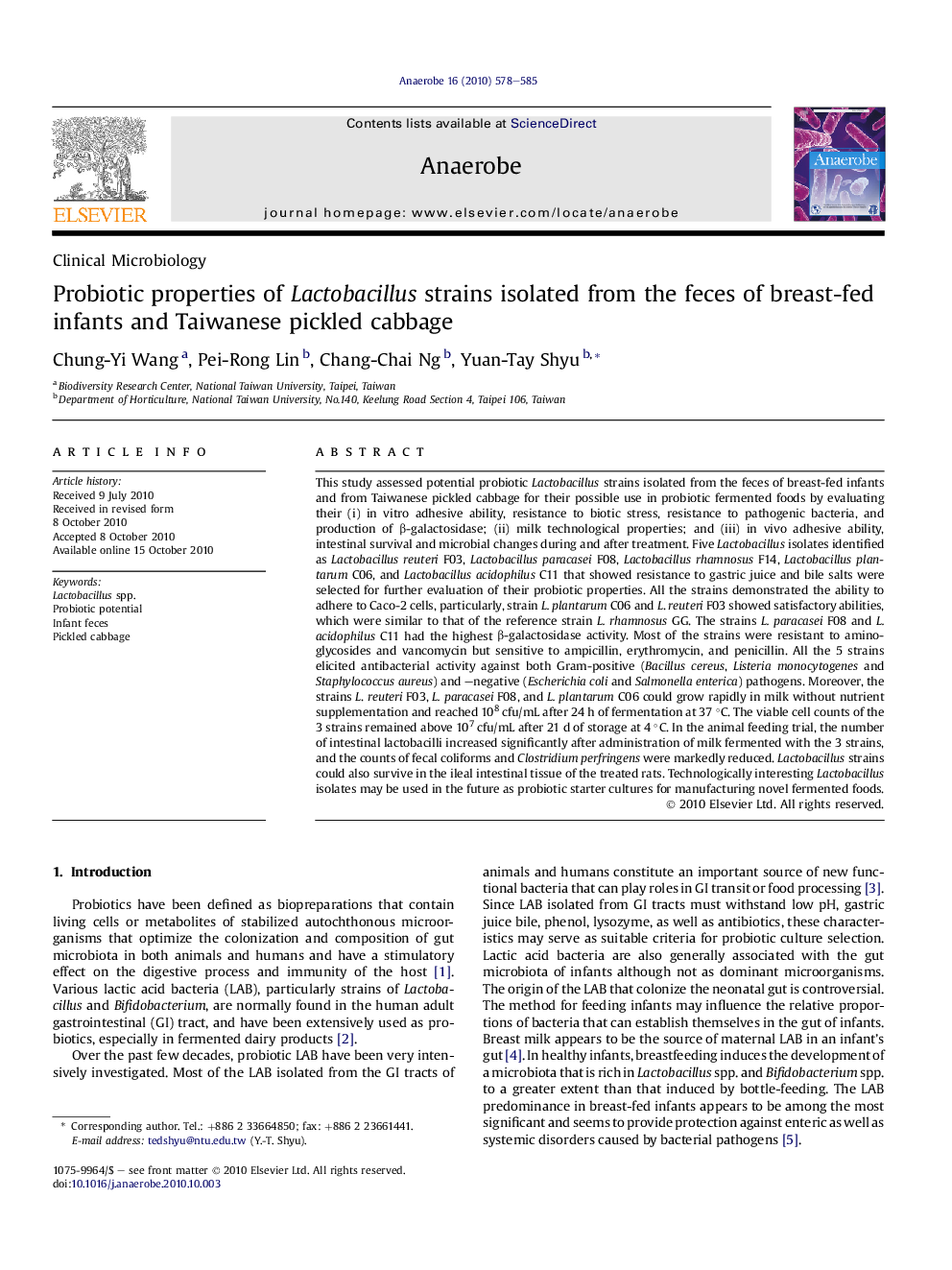| Article ID | Journal | Published Year | Pages | File Type |
|---|---|---|---|---|
| 3395616 | Anaerobe | 2010 | 8 Pages |
This study assessed potential probiotic Lactobacillus strains isolated from the feces of breast-fed infants and from Taiwanese pickled cabbage for their possible use in probiotic fermented foods by evaluating their (i) in vitro adhesive ability, resistance to biotic stress, resistance to pathogenic bacteria, and production of β-galactosidase; (ii) milk technological properties; and (iii) in vivo adhesive ability, intestinal survival and microbial changes during and after treatment. Five Lactobacillus isolates identified as Lactobacillus reuteri F03, Lactobacillus paracasei F08, Lactobacillus rhamnosus F14, Lactobacillus plantarum C06, and Lactobacillus acidophilus C11 that showed resistance to gastric juice and bile salts were selected for further evaluation of their probiotic properties. All the strains demonstrated the ability to adhere to Caco-2 cells, particularly, strain L. plantarum C06 and L. reuteri F03 showed satisfactory abilities, which were similar to that of the reference strain L. rhamnosus GG. The strains L. paracasei F08 and L. acidophilus C11 had the highest β-galactosidase activity. Most of the strains were resistant to aminoglycosides and vancomycin but sensitive to ampicillin, erythromycin, and penicillin. All the 5 strains elicited antibacterial activity against both Gram-positive (Bacillus cereus, Listeria monocytogenes and Staphylococcus aureus) and –negative (Escherichia coli and Salmonella enterica) pathogens. Moreover, the strains L. reuteri F03, L. paracasei F08, and L. plantarum C06 could grow rapidly in milk without nutrient supplementation and reached 108 cfu/mL after 24 h of fermentation at 37 °C. The viable cell counts of the 3 strains remained above 107 cfu/mL after 21 d of storage at 4 °C. In the animal feeding trial, the number of intestinal lactobacilli increased significantly after administration of milk fermented with the 3 strains, and the counts of fecal coliforms and Clostridium perfringens were markedly reduced. Lactobacillus strains could also survive in the ileal intestinal tissue of the treated rats. Technologically interesting Lactobacillus isolates may be used in the future as probiotic starter cultures for manufacturing novel fermented foods.
